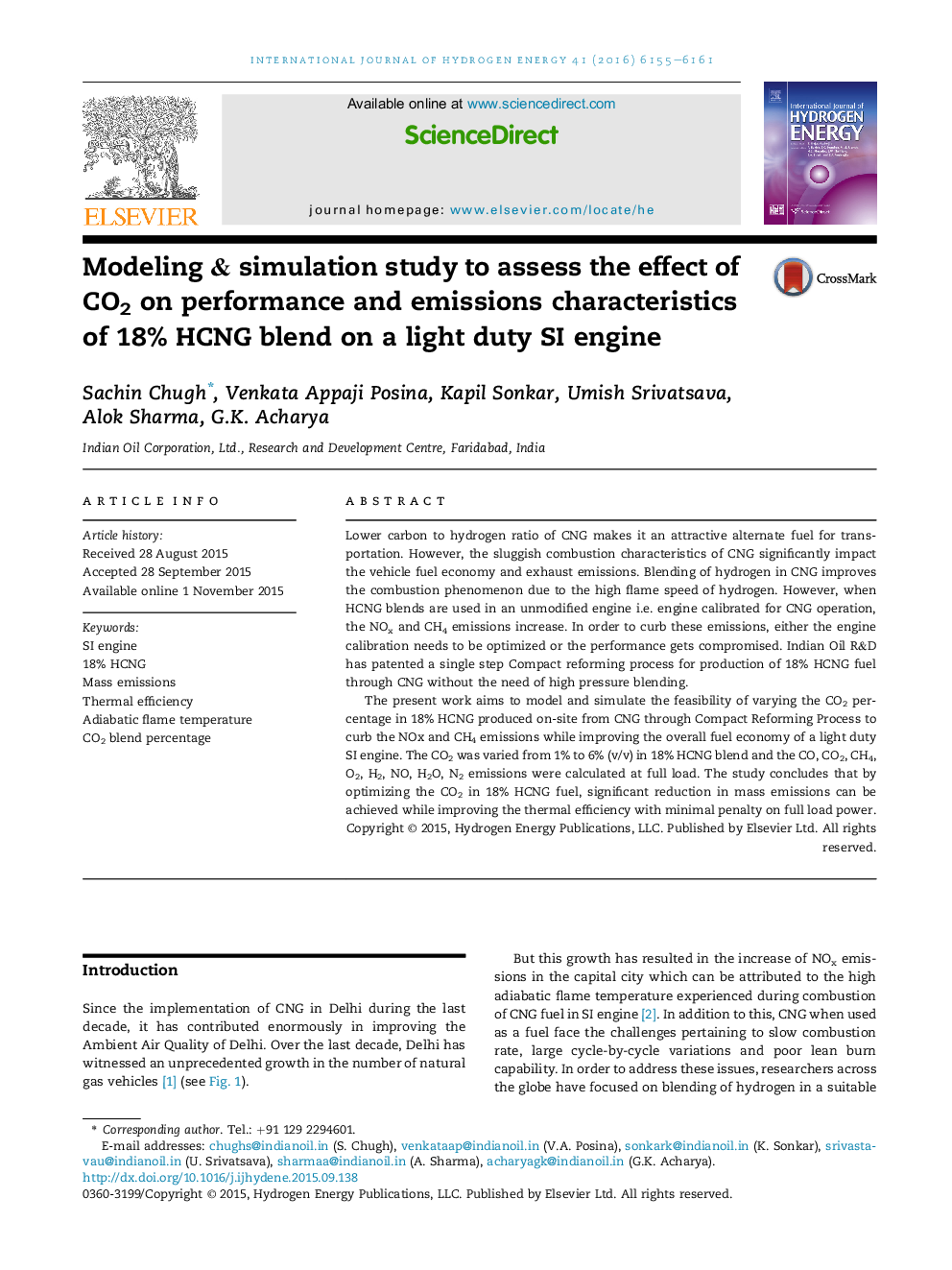| Article ID | Journal | Published Year | Pages | File Type |
|---|---|---|---|---|
| 1273622 | International Journal of Hydrogen Energy | 2016 | 7 Pages |
•Simulation has been done for HCNG blends used in an unmodified engine i.e. engine calibrated for CNG operation.•18% HCNG blend (without CO2) has higher CO, NO and CH4 emissions as compared to CNG and WOT power at full load increase by 3%.•NO and CH4 emissions can be decreased by controlling the formation of CO2 in 18% HCNG using compact reforming process.•Thermal efficiency of the light duty engine using 6% CO2 in 18% HCNG increases by 4–5%.•18% HCNG having 5–6% CO2 is optimum for Indian light duty CNG vehicles as it doesn't require any vehicular modifications.
Lower carbon to hydrogen ratio of CNG makes it an attractive alternate fuel for transportation. However, the sluggish combustion characteristics of CNG significantly impact the vehicle fuel economy and exhaust emissions. Blending of hydrogen in CNG improves the combustion phenomenon due to the high flame speed of hydrogen. However, when HCNG blends are used in an unmodified engine i.e. engine calibrated for CNG operation, the NOx and CH4 emissions increase. In order to curb these emissions, either the engine calibration needs to be optimized or the performance gets compromised. Indian Oil R&D has patented a single step Compact reforming process for production of 18% HCNG fuel through CNG without the need of high pressure blending.The present work aims to model and simulate the feasibility of varying the CO2 percentage in 18% HCNG produced on-site from CNG through Compact Reforming Process to curb the NOx and CH4 emissions while improving the overall fuel economy of a light duty SI engine. The CO2 was varied from 1% to 6% (v/v) in 18% HCNG blend and the CO, CO2, CH4, O2, H2, NO, H2O, N2 emissions were calculated at full load. The study concludes that by optimizing the CO2 in 18% HCNG fuel, significant reduction in mass emissions can be achieved while improving the thermal efficiency with minimal penalty on full load power.
